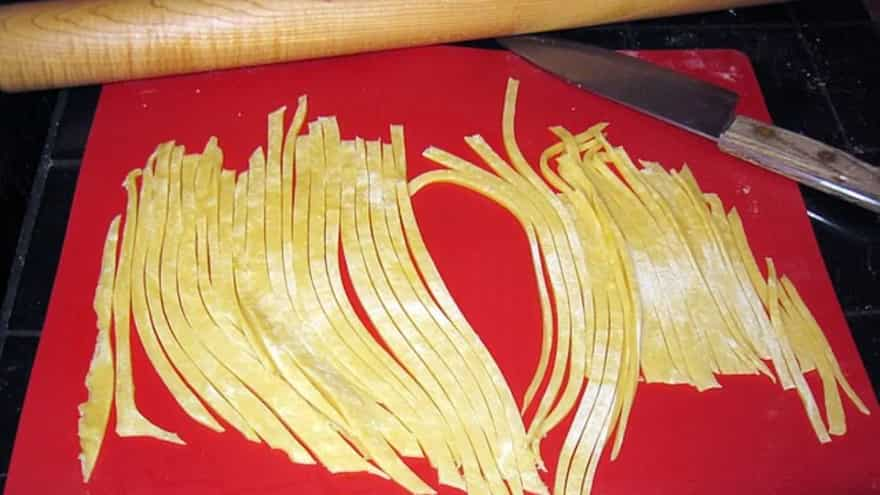Are you tired of store-bought noodles that lack authentic taste and texture? Look no further! In this complete guide, we will take you on a culinary journey through the art of crafting your very own handcrafted noodles. Get ready to impress your family and friends with these delicious homemade delicacies.
Why Choose Handcrafted Noodles?
There's something magical about making your own food from scratch, especially when it comes to noodles. Handcrafted noodles offer a unique taste and texture that simply cannot be replicated by mass-produced varieties.
Handmade noodles have been part of various cultures around the world for centuries. From Italian pasta to Asian egg noodles, each region has its own traditional methods and recipes. Making handcrafted noodles allows you to connect with these rich cultural traditions while adding your personal touch.
Not only do handcrafted noodles provide an authentic experience, but they also allow you to control the quality of ingredients used. You can choose organic flour or experiment with different types like whole wheat or gluten-free alternatives according to dietary preferences or restrictions.
Tools of the Trade: What You'll Need
Before diving into the noodle-making process, it's essential to have the right tools at hand. Here are some must-haves:
1. Mixing bowls: Use large mixing bowls for combining ingredients.
2. Rolling pin or pasta machine: A rolling pin is perfect if you prefer thicker handmade noodles; however, a pasta machine helps achieve consistent thickness throughout.
3. Knife or pizza cutter: These tools come in handy when cutting rolled-out dough into desired shapes.
4. Clean surface for kneading dough: Make sure you have a clean and well-floured surface to knead the dough.
5. Drying rack (optional): If you plan to dry your noodles before cooking, a drying rack will help them maintain their shape.
6. Flour for dusting: Use flour to prevent sticking during rolling and cutting.
Having these tools readily available will make the noodle-making process smoother and more enjoyable.

Mastering the Art of Dough Making
The foundation of any great noodle dish lies in its dough! To create a soft and elastic base for your noodles, follow these simple steps:
1. Start by combining 300 grams of all-purpose flour with 150 millilitres of warm water. You can adjust the quantities depending on how many servings you want to make.
2. Gradually mix until a shaggy consistency forms. The dough should hold together but still feel slightly tacky.
3. Use clean hands to knead thoroughly until smooth - around 10 minutes should do. Kneading helps develop gluten, giving the noodles their desirable chewiness.
4. Cover with cling film or place it in an airtight container and let it rest for at least half an hour before rolling out. This resting period allows the gluten strands to relax, making it easier to roll out later.
Pro Tip: For added flavour and colour variation, try incorporating spinach puree or beetroot juice into your dough mixture. Simply substitute some of the water with these natural additives while maintaining the overall moisture level.

Rolling and Cutting: From Dough to Noodles
Now that you've mastered the dough-making process, it's time to transform it into delectable noodles. Follow these steps for perfect results:
1. Dust your work surface with flour to prevent sticking. Divide your rested dough into smaller portions for easier handling.
2. Roll out each portion using either a rolling pin or pasta machine until thin and translucent. Start from one end of the dough and roll towards the other, applying even pressure to achieve uniform thickness. Rotate the dough occasionally to maintain an even shape.
3. Cut the rolled-out dough into desired noodle shapes - be it spaghetti, fettuccine, or even hand-pulled noodles! Use a sharp knife or pizza cutter for straight cuts, or get creative with different pasta cutters for unique shapes.
Pro Tip: To achieve uniform thickness in your noodles, use a pasta machine set at your preferred setting. This ensures consistency throughout your handmade batch.
Cooking Your Handcrafted Delights
With your freshly made noodles ready, it's time to cook them to perfection! Here's how:
1. Bring a large pot of water to a boil; add salt for added flavour. The general rule is one tablespoon of salt per four litres of water.
2. Gently place the handmade noodles into boiling water and stir occasionally. Be careful not to overcrowd the pot as this can lead to sticking.
3. Cook until al dente (firm but not hard) - usually around 5 minutes depending on thickness. Taste-test periodically until you reach your desired texture.
4. Drain cooked noodles immediately and rinse briefly with cold water to stop the cooking process.
Pro Tip: For an extra burst of flavour, toss your cooked handcrafted noodles in some garlic-infused oil before serving. This adds depth and enhances their natural taste.

Serving Suggestions: Get Creative
Now comes the fun part - experimenting with different toppings and sauces! You could opt for traditional Indian-style topics and start with butter chicken gravy or paneer tikka masala. For a more diverse palate try fusion flavours of teriyaki chicken or the Italian-inspired tomato and basil sauce. Remember that there are no rules when it comes to creating delicious dishes with handcrafted noodles.
With this complete guide, you now have all the knowledge and confidence to embark on your noodle-making adventure. Handcrafted noodles offer a unique culinary experience that will elevate your meals to new heights. So, gather your ingredients, roll up those sleeves, and start creating mouth-watering dishes that will impress even the most discerning food lover.


